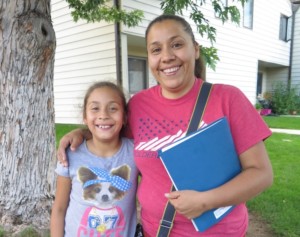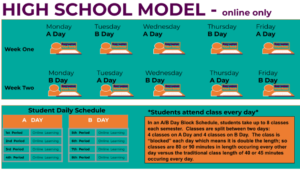4 Ways to Scale Personalized Learning

The questions around scaling innovations in learning are incredibly important and it is great to see them garnering traction in classrooms, throughout districts and at a statewide level nationally. There have been several reports in recent months highlighting how to successfully measure and scale personalized learning.
Scaling at a State Level
In August 2015, KnowledgeWorks released a report titled A State Policy Framework for Scaling Personalized Learning, which defines personalized learning and outlines an implementation roadmap for districts. KnowledgeWorks defines effective and sustainable personalized teaching and learning environments as:
- Instruction is aligned;
- Instruction can be customized;
- The pace of instruction is varied;
- Educators use data; and
- Students and parents have access.
The report outlines four areas that states can use as a foundation of building personalized learning at a district level; applying for flexibility, defining areas of flexibility, defining areas of assurance and supporting district implementation. States should be prepared to create a culture of innovation and transparency. Data will be the driving factor in the evaluation criteria for districts and should measure student performance including academic content, skills and dispositions.
Scaling Nationally
To better understand scaling learning innovations nationally, Getting Smart partnered with Next Generation Learning Challenges (NGLC) to explore how new innovations are leading to improving college and career preparedness. 14 NGLC grant recipients presented innovative school designs and explained how they would feasibly scale without grant support, as NGLC believes that to school models must be replicable on public funding.
The school design elements in this study included:
- High expectations for college readiness;
- Personalized learning for all students; and
- Optimized to scale.
Blended learning environments were key for the schools interviewed and personalization for students extended to how, what and when a student is able to learn. Teachers are rapidly adopting different learning styles for each student as new tools and blended environments support individual development needs, skills and interests. Individual support through technology occurs through three foundations: motivation, customization, and equalization.
High targets and a low budgets may allow for school designers and leaders to hit their marks for financial sustainability but financial concerns remained a key factor in successfully implementing new models, even as the report states that “one of the key goals of the next gen schools is to establish that blended, personalized, mastery-based approaches that leverage technology to significantly increase student success can be produced at equal or lower costs than current norms.”
Scaling At a District Level
While states play an important role in supporting personalization and blended learning implementation, each district has different needs and resources and therefore implements unique programs. Getting Smart in partnership with Fuel Education released How to Successfully Scale Personalized Learning: Six Key Lessons from Effective Programs.
The report outlines six lessons directly from educators who have successfully scaled online and blended programs. Educators and administrators also share benefits currently being realized after implementation and recommendations for other school leaders who wish to scale.
Scaling Regionally
In 2009, Poudre School District (PSD) Global Academy located in Fort Collins opened with a model that blended face-to-face instruction with online learning from home with the goal to provide a “global education in a local community”. Highlighted in the report Online, Virtual, and Blended Learning in Action. Case Study: Poudre School District Global Academy, PSD Global Academy listened carefully to stakeholders, wasn’t afraid to break ground on new ideas, and embrace change – the first model may not always be the right model for your community.
Getting Smart published Preparing Leaders for Deeper Learning to outline more powerful development pathways for schools leaders and teachers to truly benefit from the same deeper learning experiences that they seek to create for students. Parents, teachers, and administrators must develop, foster and lead the shift to personalized learning regionally.
There are many resources, models and environments that guide the implementation and scaling of personalized learning but reports lead to similar conclusions; each student, teacher, district, and state must decide their own pathway. Given the appropriate funding, flexibility and support, personalized learning models have taught students how to learn, increased career readiness and teacher preparedness.
For more on Personalized Learning:







0 Comments
Leave a Comment
Your email address will not be published. All fields are required.